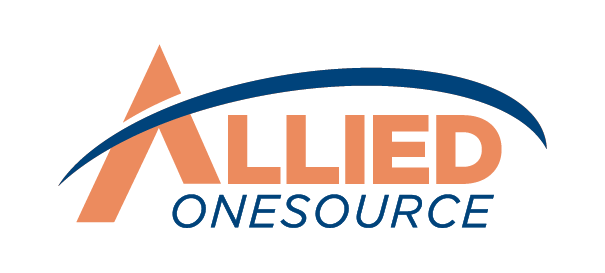Diversity by Design: The Role of Blind Recruitment in Preselection
Why can’t we just treat everyone equally and move on? A recruiter sits down to review two resumes. One is from a well-known name in the industry, while the other comes from a candidate with a different cultural background. Both have identical qualifications and experience, yet the recruiter faces a decision that goes beyond just the credentials on paper.
Whether we realize it or not, unconscious biases impact hiring decisions, leading to missed opportunities for diversity, innovation, and talent that could be the perfect fit for a role. These biases can influence everything from the way resumes are screened to the final interviews.
The bright side is that blind hiring is a great method to fairer hiring practices. By removing personal details such as names, gender, age, and cultural background from resumes and applications, blind hiring allows hiring managers to focus solely on the candidates' skills, experience, and qualifications.
Beyond Bias: The Value of Fair Hiring
Well, the truth is that even the most well-meaning among us sometimes hold biases we’re not even aware of. It’s easy to lose sight of objectivity which leads to exclusion. Here’s the value of fair hiring:
Levels Candidates' Playing Field
Blind hiring levels the playing field for everyone. Focusing solely on skills, experience, and qualifications, minimizes bias and promotes diversity. From transparent job descriptions and bias-free language to anonymous screening and skill-based assessment, candidates will feel less pressure to “oversell” themselves based on personal details.
This approach builds trust in your hiring process and encourages applications from underrepresented groups who might otherwise hesitate to apply.
Gives You Access to a Broader Talent Pool
When you implement blind recruitment, you automatically expand your reach into previously untapped talent pools. Focusing on skills and qualifications lets you tap into a wider range of experiences and perspectives.
This helps you discover talents that might otherwise be overlooked due to unconscious bias. his expanded talent pool brings diverse experiences and skill sets that can strengthen your team's capabilities and drive innovation.
Read More: 4 Takeaways from Global Companies Leading with Exceptional Culture
Diverse Teams Mean Fresh Perspectives
When you have employees from different backgrounds working together, they see challenges through different lenses. This fresh way of thinking can bring about more creative and effective solutions.
Read More: 5 Tips To Creating and Implementing an Inclusive Work Environment
Strengthens Your Employer Brand
Many job seekers want to work at companies that care about inclusion. With studies showing that 3 in 4 job seekers consider diversity and inclusion crucial when evaluating companies and job offers.¹ A reputation for fair hiring practices shows that you are forward-thinking and committed to equality, which helps you attract and retain top talent who share these values.
How to Build a Blind Recruitment Process
Do you want to create a fair, inclusive hiring that attracts top talent and eliminates bias? We’ve got you. Here’s how to build a blind hiring process that works:
1. Start with Application Anonymization
Even till date, the foundation of a blind recruitment process is to remove personal details like names, gender, and age that could trigger unconscious bias. Use technology like applicant tracking systems (ATS) or specialized software to automatically remove identifying information from applications and resume screening.
Map out rules for anonymizing applications across all platforms and recruitment channels. Make sure these rules apply whether applications come through job boards, referrals, or email submissions. Now, your recruiters and hiring managers might not even realize they’re holding onto outdated views about diversity, so make sure they understand the anonymization process and its importance.
2. Establish Standardized Evaluation
Create a clear skill-based assessment matrix to ensure fairness and consistency when evaluating candidates. This matrix should include technical and soft skills, experience, and qualifications required for the role. That way, candidates are evaluated based on their abilities, not their background.
Use standardized scores to measure candidates objectively. Each skill or experience being evaluated should have a score to help compare applicants consistently. You want hiring decisions made based on merit, not subjective opinions.
And when your teams are deciding on the evaluation process, keep a record of the score and reasons behind their decisions. This is how you remain accountable, maintain transparency, and provide clarity when needed.
3. Train Your Hiring Teams
We can’t talk about blind recruitment without touching on your recruitment teams. Yes, many people try to reduce biases, but some biases can slip through occasionally. Training your teams gives them the resources and tools to sustain a fair hiring process.
It’s all about raising awareness of unconscious bias. How? Well, first off, conduct workshops and training programs to help recruiters and hiring managers recognize and address unconscious biases. Think role-play exercises, guest speaker sessions, or even monthly bias discussions where they can learn about blind recruitment.
Next, give your team the tools they need to handle what comes their way. That means teaching evaluation techniques and giving them templates, scorecards and digital tools for a consistent evaluation that reduces subjectivity and keeps hiring focused on skills and qualifications.
4. Design Inclusive Job Descriptions
To attract diverse candidates, you need to first speak to them. That said, you need to use neutral language to make job descriptions. Neutral phrases like “team player” or “problem-solver” appeal to a broader audience.
Don’t forget to remove limiting words like “expert” or “competitive” that may discourage some applicants who feel that doesn’t describe who they are. Instead, use phrases like “willingness to learn” or “growth mindset” to encourage diverse applicants to apply.
Focus on essential qualifications and experience, rather than an exhaustive list of requirements. For example, instead of a degree specification, emphasize relevant experience or certifications that demonstrate the necessary expertise.
Read More: Ethical Considerations in Staffing: Promoting Fairness and Equal Opportunities
5. Implement Structured Interviews
Now you are past the screening and you’ve invited them into the office for an interview. How exactly should you maintain fairness to all candidates?
As a hiring manager, you need to have a set of predesigned questions that pertain to the job’s key skills and requirements. Focus on behavioral and situational questions, such as:
“Can you describe a time when you had to solve a complex problem under pressure?”
Use preset scoring rubrics to evaluate responses objectively. For example:
5 = Exceeds Expectations
3 = Meets Expectations
1 = Needs Improvement
This structured approach removes guesswork and allows interviewers to compare candidates fairly.
Use multiple interviewers to bring diverse perspectives into the evaluation process. A panel interview reduces individual biases by encouraging members to collaborate on decision-making based on collective feedback.
Pro Tip: Having a set of interview questions ready is okay, but interviews need to be more interactive. So, encourage open-ended discussions, ask follow-up questions, and give candidates space to show their thoughts.
6. Monitor and Measure Results
You, as a recruiter, can also be better for future interviews. Set and track metrics for diversity and inclusion. Things like the percentage of underrepresented groups in applicant pools, interview stages, and final hires will tell you what progress has been made.
Are diverse candidates getting to later stages of recruitment? Is there a drop-off point where bias may still be occurring? These questions are just some of the things you can ask yourself to spot trends, gaps, or patterns.
Once you’re aware of what’s working and what’s not, it’s time for you to refine your processes. Use your findings to improve workflows, retrain teams, or tweak evaluation criteria.
Build Better Teams by Removing Bias
Your recruitment process should be a gateway for talent, not a barrier. Blind recruitment removes unconscious bias, ensuring candidates are evaluated for what truly matters—their skills, experience, and potential. This is how you level the playing field for everyone and build stronger, more innovative teams that reflect our diverse world.
Ready to transform your hiring process? At Allied OneSource, we help companies implement blind recruitment strategies that get results. Contact us today to learn how we can help you build stronger, more diverse teams through fair hiring practices.
Reference
- Glassdoor’s Diversity and Inclusion Workplace Survey. www.glassdoor.com/blog/glassdoors-diversity-and-inclusion-workplace-survey.










